Table of Contents
Add a header to begin generating the table of contents
If you’re a fan of homemade bread, sourdough bread, and a hint of sweet flavor, this homemade cranberry boule bread recipe is your new favorite! Inspired by Michael Ruhlman’s Ratio, this turned out a delicious product with the flavor of sourdough (it’s not) and just a dash of sweetness to give it a tangy flavor that is SO GOOD.
Made with ingredients you’re likely to have on hand in the pantry, this can be made on your timeline – either in the span of an afternoon, or in a 24-hour window. It’s easy, and even easier if you have a stand mixer. Homemade bread doesn’t have to be intimidating or boring, so let’s get to baking!
Why you'll love this boule bread
You get the taste of a sourdough bread without having to use sourdough starter. The tanginess from the apple cider vinegar mimicks the flavor of sourdough and the cranberries and maple syrup give the bread a more well-rounded flavor.
All-purpose flour is more than fine for a boule bread. If you have bread flour on hand, go ahead and substitute, but the all-purpose flour makes this more accessible.
Go ahead and customize the additions! The dried cranberries have a complimentary tanginess that work well with the bread. But, you can add nuts, different dried fruit, chocolate chips…whatever your heart desires!
Depending upon the "filling" ingredients you use if you decide to add something other than cranberries, this recipe is a great option for vegan, vegetarian, and flexitarian diets.
Ingredient List
The Foundation
All-purpose flour: Again, all-purpose flour is a great choice for boule. You are welcome to use bread flour in its place.
Water: Water is a critical component to the bread ratio for moisture, of course. I dissolve the yeast in the water before adding to the flour.
Active dry yeast: Active dry yeast does need to be activated before using, so I measured a teaspoon out of the packet and dissolve it with a little granulated sugar (½ – 1 tsp). Make sure the water is lukewarm. The temperature of the water is less important than the yeast instructions will tell you, so the best rule of thumb is a lukewarm or slightly warmer than lukewarm temperature.
Granulated sugar: A little granulated sugar feeds the yeast and helps it ferment a little more quickly. Nom. Nom.
Kosher salt: Salt gives bread more flavor (yum), but use kosher salt so it gets evenly distributed throughout the dough.
Unique Flavor Additions
Apple cider vinegar: This acidic ingredient has so many superpowers, doesn’t it? Just a tablespoon helps give the bread a sour taste, but we don’t want to inhibit yeast growth.
Pure maple syrup: I like a little pure maple syrup – or honey for those who aren’t vegan – to provide a little sweetness to the bread, stopping short of making this a sweet bread. It may not be a sweet bread, but the deliciousness is off the chart!
Customizable Options
Dried cranberries: Use the brand and type of dried cranberries you like – or substitute with any additions you prefer. Keep in mind that when the bread bakes, any cranberries on the bottom of the dough might stick to the baking sheet or Dutch oven.
Olive oil or a neutral-flavored oil: If baking in a Dutch oven, use a little olive oil to coat the bottom of the Dutch oven to prevent it from sticking. The oil also infuses the loaf with a little more flavor. Adding a little oil to the outer layer of the dough before putting it in the oven will give the bread more flavor and this is critical if you don’t have much time to let the dough rise, get kneaded a second time, and rise again. Also, be sure to pick an oil that doesn’t have a smoke point below 450ºF.
Coarse sea salt: Completely optional. This just adds a little more flavor if you sprinkle it over the bread before baking.
You can bake this bread the same day you make the dough, or you can let the final rise happen overnight. The Dutch oven is what gives the dough its crispy crust!
Pro Tip:
If you have a kitchen scale and stand mixer, use the bowl of the stand mixer to add your ingredients and then just pop it on the stand and use the paddle (switching to dough hook) to mix the dough together.
Recipe
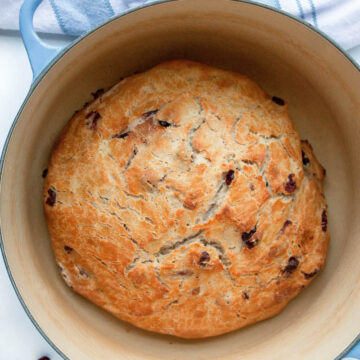
Cranberry Boule Bread
Equipment
- Dutch oven
Ingredients
- 4 cups all-purpose flour plus a little extra for kneading
- 1½ cups lukewarm water
- 1 cup dried cranberries
- 2 tablespoons apple cider vinegar
- 1 ¼ ounce packet active dry yeast
- 1 tablespoon pure maple syrup can substitute with honey
- 2 teaspoons kosher salt
- 1 tablespoon olive oil can substitute with another neutral-flavored oil
- 1 teaspoon granulated sugar for yeast activation
- pinch coarse sea salt
Instructions
- Add ½ cup lukewarm water to a measuring up and stir in the yeast. Add granulated sugar, stir to combine, and allow the yeast to develop while you measure the flour.
- In the mixing bowl of your choice (preferably of a stand mixer) that is placed on a scale and zeroed out, measure 20 ounces or approximately 4 cups of all-purpose flour. If you don't have a kitchen scale handy, measure out about 4 cups of flour. Keep another ½ cup handy to add too the dough if it seems to loose when you mix it.
- Add the yeast mixture to the flour. Then, add another scant 1 cup of water.
- Add salt, apple cider vinegar, and pure maple syrup to flour mixture. Using the paddle attachment on the stand mixer (or beaters on a hand mixer), mix on low-medium speed until the ingredients come together. Switch to the dough hook attachment and mix on low speed (I alternate between setting 2 and 4 on the KitchenAid mixer) for a few minutes before adding dried cranberries.
- After adding cranberries, mix about 15 minutes, or until the dough is elastic enough to grab a piece and stretch without immediately breaking. Cover with a dish towel or plastic wrap and set aside. Allow the boule bread dough to double in size, about 4 hours.
- On a lightly-floured surface, knead the dough to redistribute yeast and other ingredients. Cover with a dish towel and allow to rest for about 10 minutes.
- Using a circular motion, shape the dough into a boule and score the top with a knife, making an x shape. Add a little olive oil to the bottom of the Dutch oven, to help prevent sticking. Place boule-shaped bread in the Dutch oven. Cover again and allow to rest for another hour, or overnight. Otherwise, preheat the oven to 450ºF while it rests for the final hour.
- Rub the exterior of the dough with olive oil - or another neutral-flavored oil - and sprinkle with a little coarse sea salt.
- Cover the Dutch oven and bake for 30 minutes. Remove lid and bake for another 10-15 minutes, or until the edges have a deep golden color and the bread sounds hollow when you carefully tap on it.
- Allow to cool until safe to handle and transfer to cooling rack to cool completely. Enjoy and store in an air-tight container. Use within 5 days or freeze for longer storage.
Notes
- Honey in place of pure maple syrup.
- Nuts or dried fruit of your choice, in place of dried cranberries.
- Bread flour in place of all-purpose flour.
- Pecan oil or neutral-flavored oil of your choice, in place of olive oil.
Nutrition
Tips for a delicious homemade bread
To consolidate dishes, I add ½ cup of the required water to a measuring cup first, add the yeast to the water, sprinkle in the sugar, and stir. This will help ensure the yeast dissolves and has a moment to feast on the sugar before it has to go to work with the flour. I’ve found that adding flour to the mixing bowl, pouring in the water, and then adding the yeast doesn’t guarantee that the yeast will contact enough of the water to fully dissolve.
Infuse the bread with a little more taste by brushing some oil on the loaf before baking. Salt adds flavor, so consider sprinkling this with just a little coarse sea salt.
Use a Dutch oven to help give the steam produced by baking get trapped in the oven and create a crispy crust – the kind of crust we all love when biting into some homemade bread. Or, put it on a baking sheet (if you have a baking stone or a ceramic surface, that is best) with a cast iron skillet below. As Michael Ruhlman suggests, preheating the oven with the cast iron skillet in it – and then adding a cup of water to the hot skillet when you put the bread in the oven on the rack above – will also create steam that gives the bread a crisp crust.
Don’t overmix the dough. Once it becomes elastic without breaking when you tug at a piece of it, go ahead and allow it to rise. Give the yeast a chance to work its magic.
Frequently Asked Questions
Won’t apple cider vinegar kill the baker’s yeast?
While sourdough breads with natural yeast tend to embrace acidic ingredients, baker’s yeast can be impacted by the addition of too much vinegar. Just as the sugar can add to the appetite of yeast, vinegar can undo that. Therefore, we added a little more yeast than traditionally called for in the recipe and allowed the dough a little more time to rise. If you add vinegar to most homemade bread recipes, I would not exceed 1 tablespoon of vinegar, but 2 tablespoon works well with this cranberry boule bread recipe.
How long does each rise of the dough take?
The first rise will last several hours. Wait until it has doubled in size to knead it by hand. It should also be a little bouncy when you touch it, as opposed to flimsy. The last rise depends a bit on how much time you have before needing to bake the bread. The more time you can give the yeast to work its magic, the more flavorful your final product will be, but adding the coat of olive oil helps ensure you get a flavor punch if working with limited time.
How can I serve this boule bread?
However you wish! Since this particular recipe balances the sweet with tangy, you can really offer it with any meal, or as a stand-alone snack. Enjoy it for breakfast, or imagine a nice quinoa dish with veggies and a slice of this cranberry boule bread...it really makes for a versatile compliment to any meal! (I'm also considering a fancy grilled cheese at some point in the near future...stay tuned!)
Why is this considered a boule?
It's shape! Boule is French for "ball" and this bread is shaped like...you guessed it, a ball. I love how the shape gives it a more artisanal look and makes it a great option for a variety of uses. As opposed to a baguette (and I love baguettes), you can always cut down the slices of a boule bread to fit your needs. Use it as a sandwich bread, if you like, or leave a portion of the loaf to go *slightly* stale, cut into cubes, and toast for some fancy croutons! DELISH! Don't forget to score the top of the bread with a sharp knife before baking, if you want a very traditional look.
What substitutions are possible?
The better question might be what substitutions aren't possible! The most common swap involves the filling, so feel free to use whatever you enjoy. Nuts, chocolate chips, berries - the list is extensive. This bread is delicious plain as well.
If you happen to have bread dough on hand, that can create a more tender crumb due to the higher gluten content. And, if you prefer honey to pure maple syrup, you can use that in place of the syrup without making volume adjustments.
Bite into these other delicious bread recipes
Looking for another excuse to pull out your slow cooker? You'll love the tender crumb and delicious homemade flavors of this Slow Cooker Bread.
You'll be right back in your grandmother's kitchen to whip up a healthier batch of skillet biscuits with this Vegan Avocado Oil "Buttermilk" Skillet Biscuits recipe!


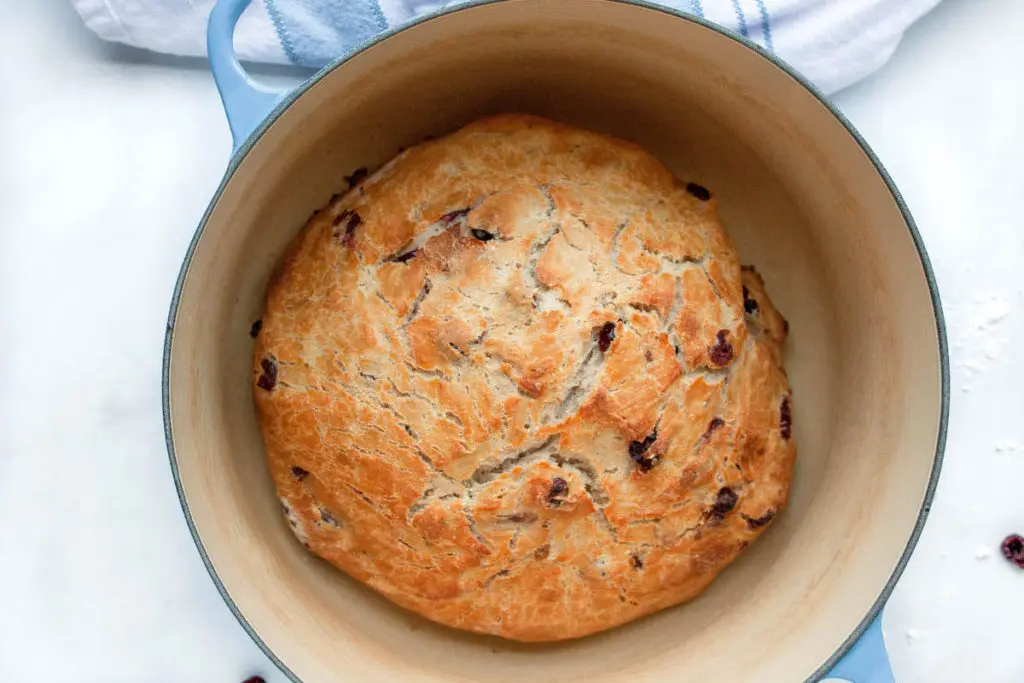
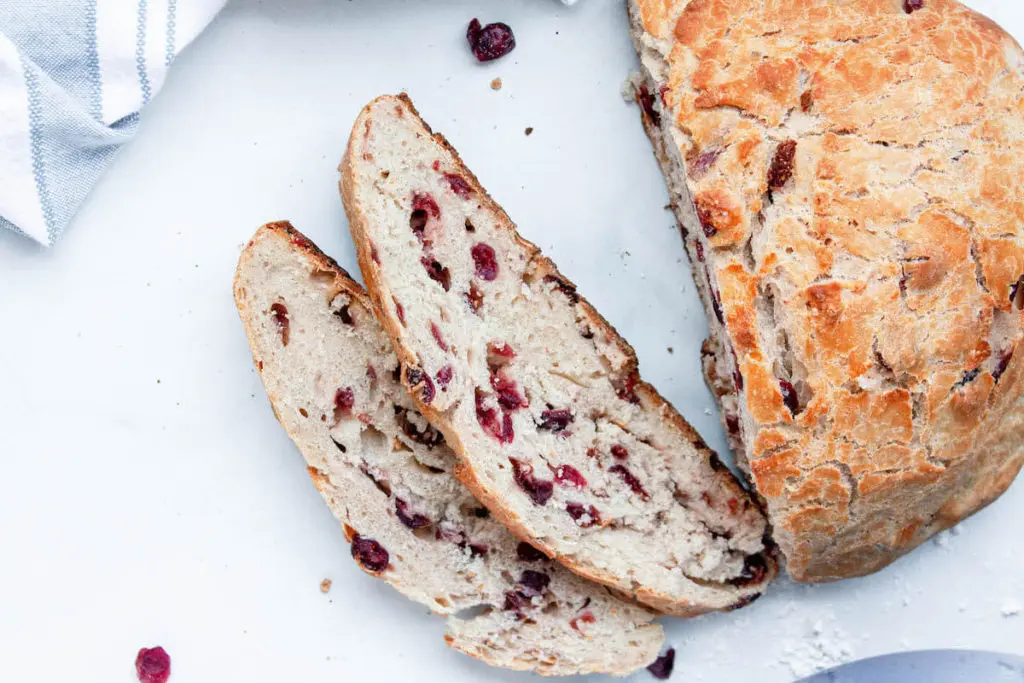
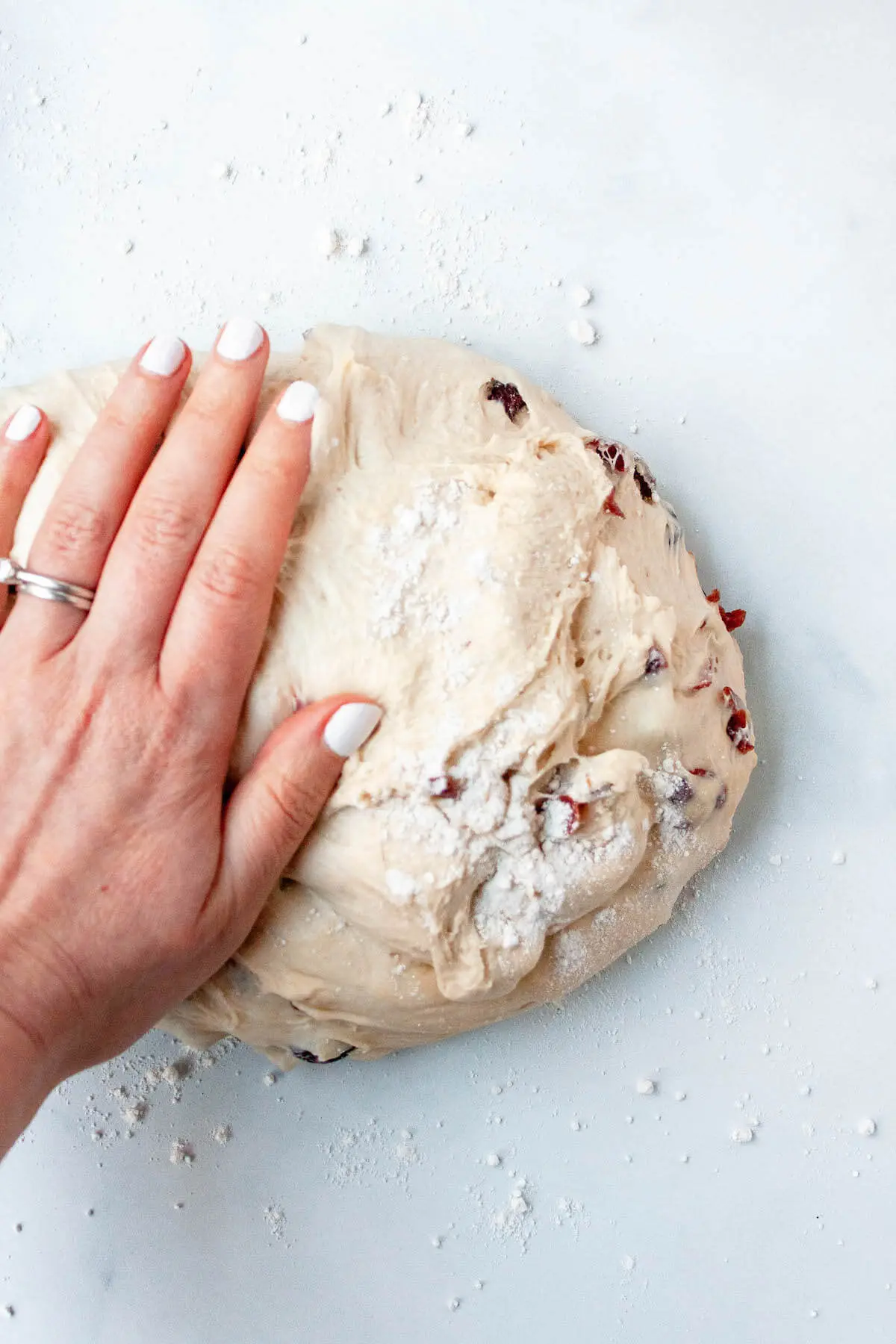
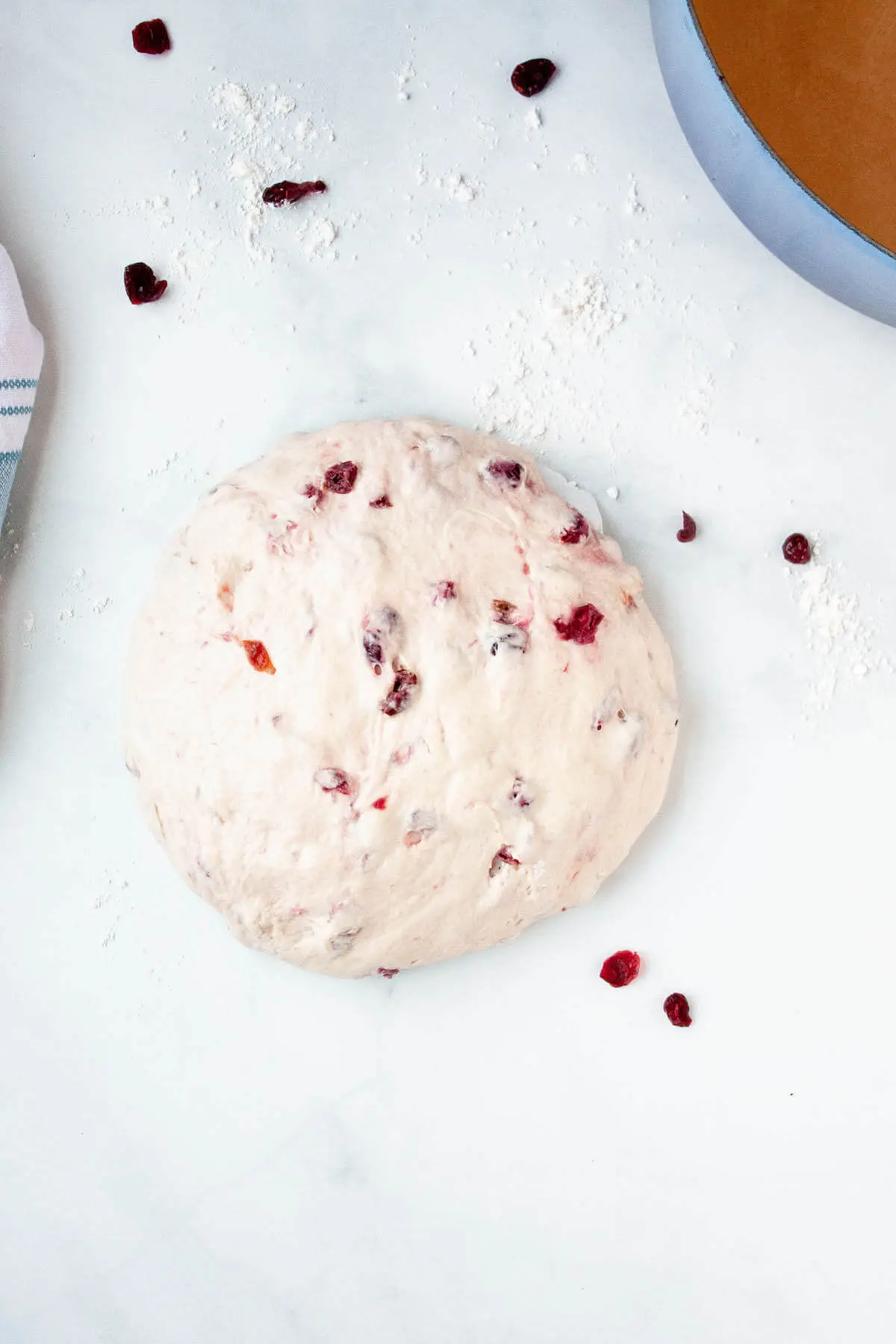
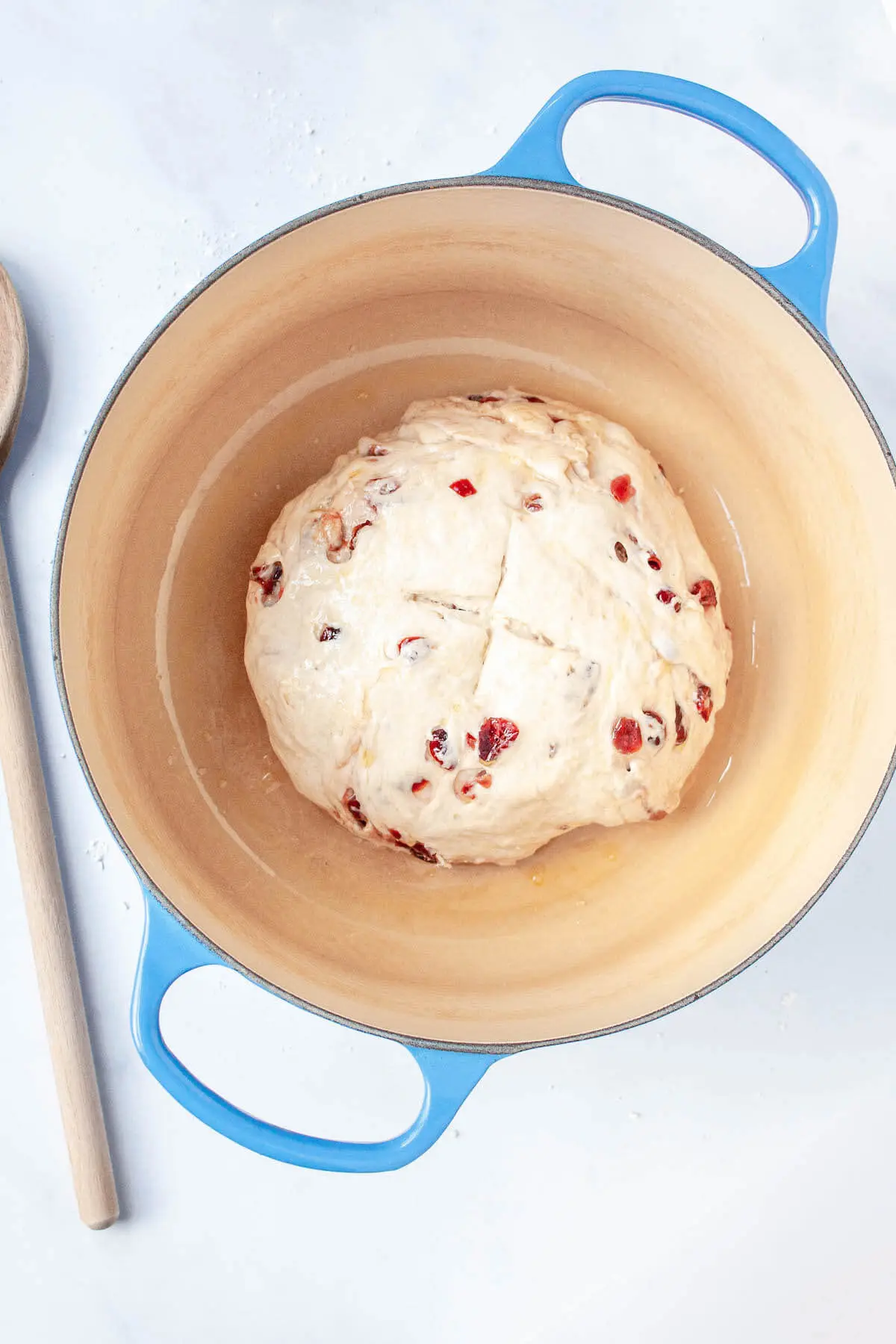
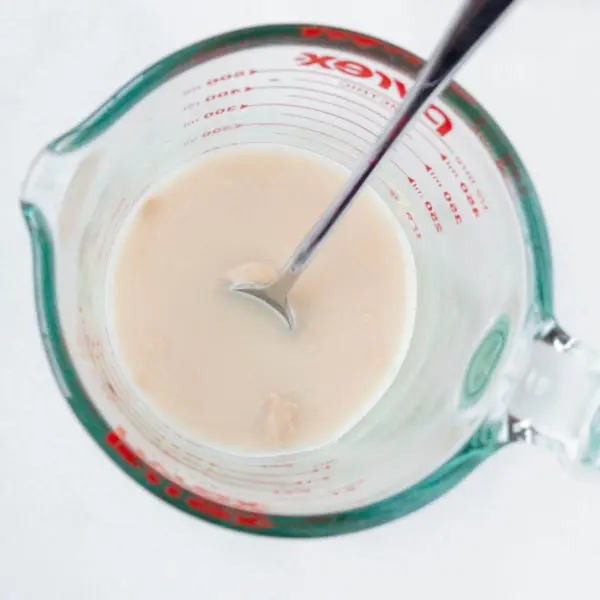
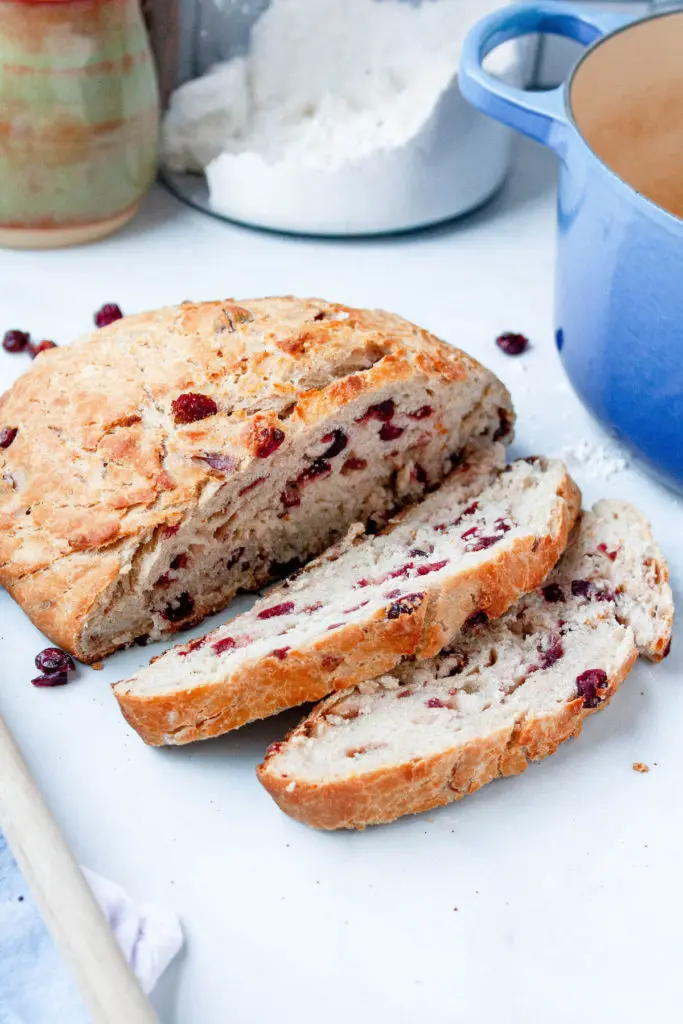
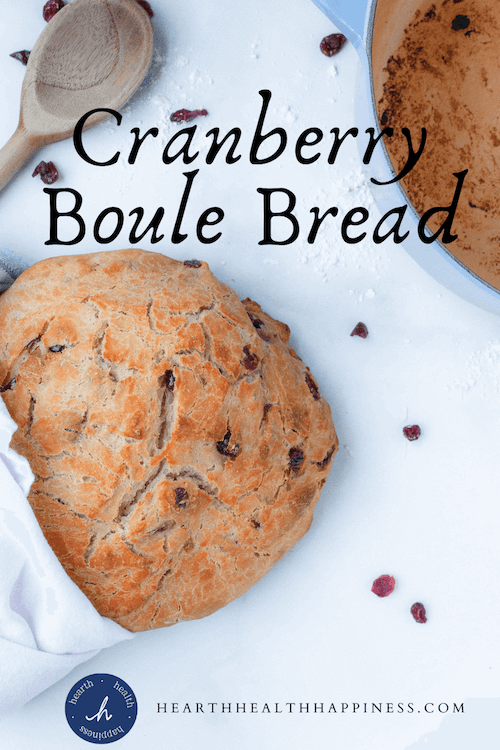
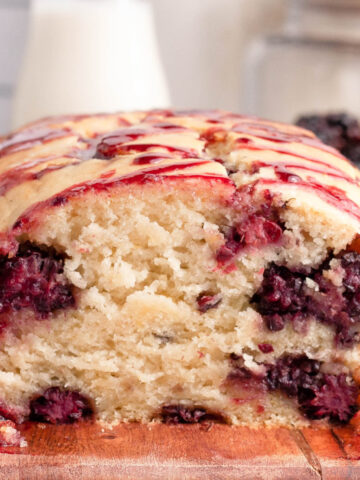
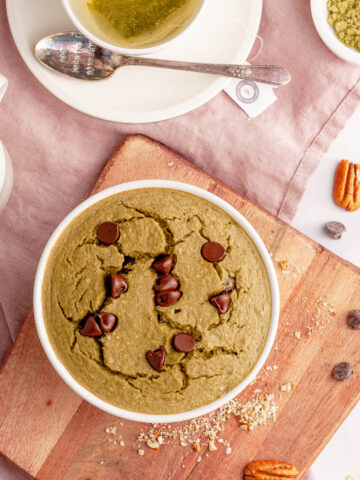

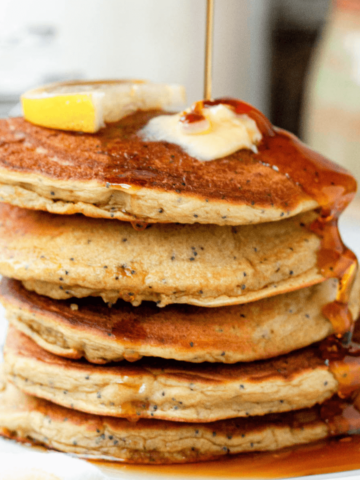
Leave a Reply